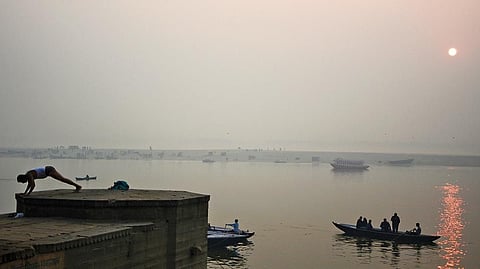Exploring Banaras: ‘Intriguing, fascinating, overwhelming’
Banaras, a coffee table book written by Nilosree Biswas with photographs by Irfan Nabi, tells a compelling and visually splendid story of a city that for millions of Indians is a state of mind. Anand Raj OK speaks to the duo to find out how they put it together and why certain images of the city refuse to fade from their minds
Last updated:
8 MIN READ

Banaras
Banaras
Banaras
Broken Memory
Shining Dust
Alluring Kashmir: The Inner Spirit
Banaras is available on Amazon.com and niyogibooks.com.
Sign up for the Daily Briefing
Get the latest news and updates straight to your inbox
Up Next



